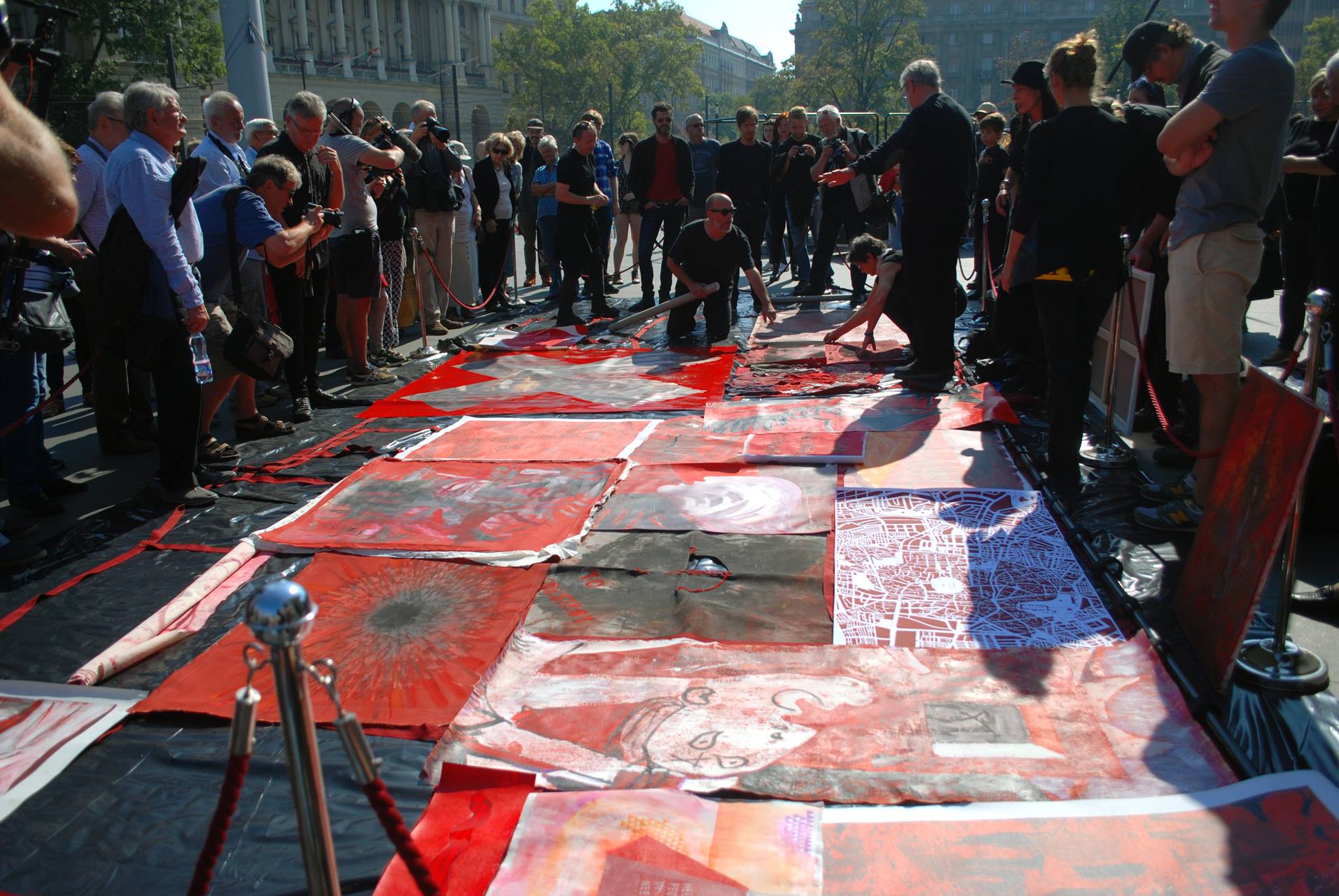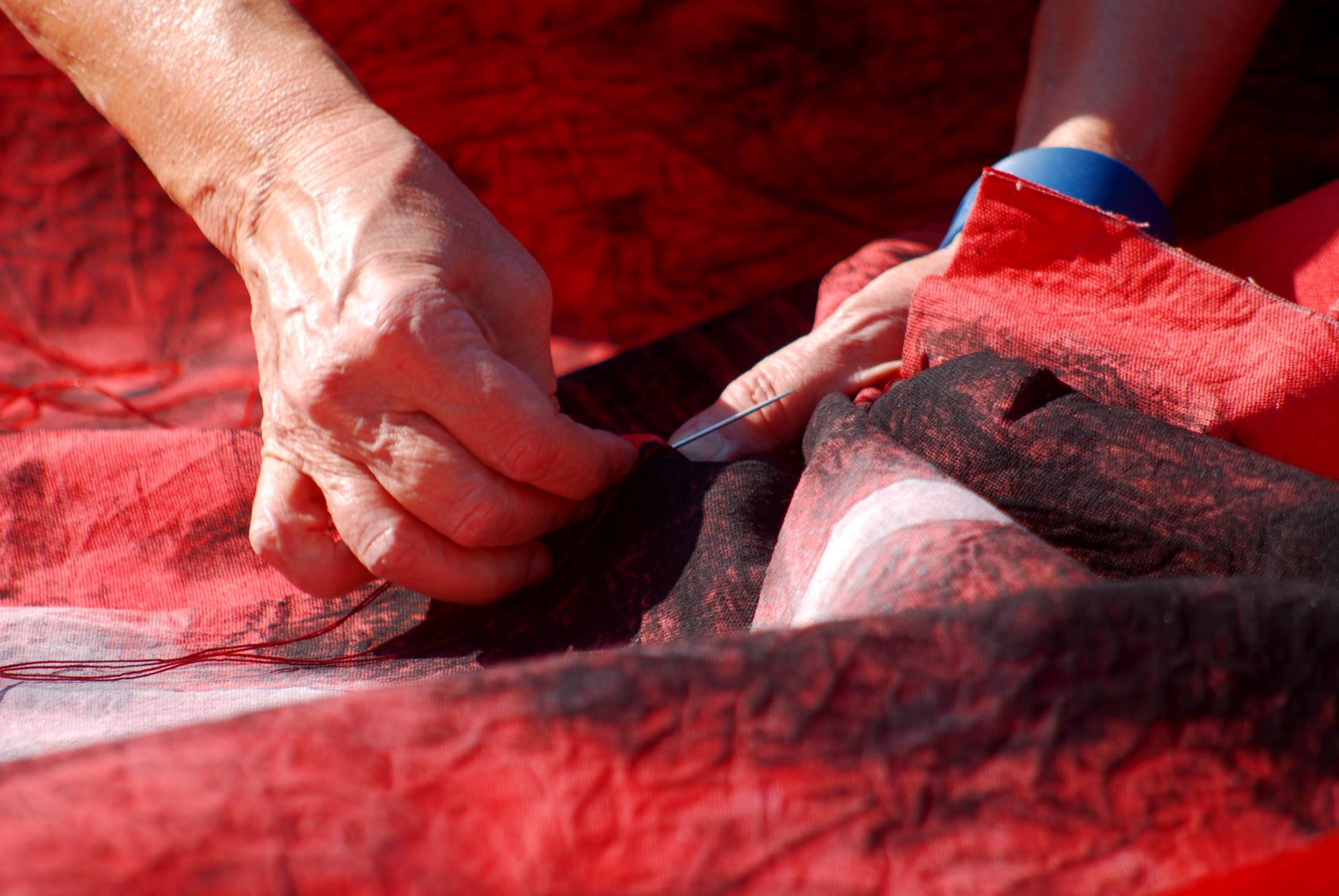As Syria bleeds and its wounds multiply, governments across the world turn their eyes away. In Hungary, the Fidesz government invested 50 million euros of public funds in a campaign for a referendum to challenge the resettlement of 1,500 refugees agreed on the EU level. The government couldn’t convince enough of the electorate to vote on the referendum. The campaign failed.
Two days before the referendum, a wide alliance of civil society groups and individuals organized a rally against the campaign in front of the parliament. Among them were Peter Horgas and more than 30 other Hungarian artists[1]. They presented their artwork Aleppo Testimony in recognition of the suffering of Syrian war victims and in support of the refugees looking for a safer life.
The project originated from Peter Horgas, a stage designer who was later joined by contemporary artists. Horgas was disturbed by the images of children being gassed in Syria. “I felt I had to do something.” He was joined by twenty other artists in Hungary on the project. The idea was based on Picasso’s Guernica, a profound anti-war symbol painted after the bombing of the village by German planes during the Spanish civil war.
The scroll incorporates smaller individual pictures made by artists in Aleppo, which have been sown into scroll. The unifying theme is that all the pictures are red. There are elements from Guernica included in the scroll such as an image of Picasso’s hand and a crying eye. The exhibit mainly centers on Aleppo by displaying maps and photos of the city.
The scroll itself is the symbol of bloodshed in Aleppo and will continue to grow until there is peace in Syria. Horgas will be traveling to different cities throughout Europe to add onto the scrolls. He plans to end at the Vatican, the twelfth station and hopes that the Pope can join the inauguration.
This is a collective symbol and Horgas invites Syrian artists to contribute as he moves through various cities. He started in Budapest and been to Subotica and Belgrade. There’s a hope that the exhibition can go beyond Europe to the US to raise awareness of the plight of Aleppo.
To participate or follow the exhibit, you can find their Facebook page here, or email Peter Horgas.
[1] The idea originated from Péter Horgas, a renowned stage designer who was later joined by other famous contemporary artists, like György Árvai, István Badóczky, Levente Bagossy, Mari Benedek, Tibor Bornai, László Böröcz, Nóra Bujdosó, Ágnes Eprjesi, Krisztián Gergye, Tünde Gersbühl, Móni Hafner, Zoltán Imre, Dorottya Kanics, Zoltán Kemény, András Király, Ferenc Koloncsák, Mihály Lukács, Zsuzsi Medve-free ostástka, Bálint Miksa, András Mohácsi, Tünde Murányi, Fruzsina Nagy, Csaba Nemes, Nelli Pallós, Viki Papp, Nóra L. Ritók, Edit Szűcs, Miklós Szűts, Tóbiás Terebessy, Erzsébet Vojnich.
 The Aleppo Project
The Aleppo Project


